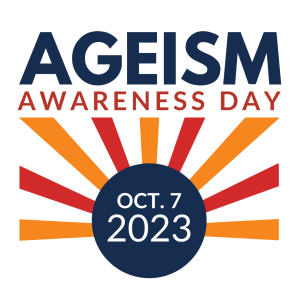DOJ Elder Justice Initiative Highlights Ageism Awareness Day

On Ageism Awareness Day, we reflect on the intersection of ageism and elder abuse, how ageism impacts the older adults we serve, and what more we can do to identify and mitigate its harms.
EJI invites you to discover more about this important topic and explore ways that recognizing and addressing ageism can improve our ability to serve those who have experienced elder abuse, neglect or financial exploitation.
What is Ageism?
Ageism refers to the stereotypes (how we think), prejudice (how we feel) and discrimination (how we act) toward others or oneself based upon age. There are many forms of ageism, including:
- Internalized ageism: How we feel about ourselves as aging people; and ageism in which older adults marginalize and discriminate against other older people.
- Cultural ageism: The everyday, invisible, profoundly ingrained and normalized negative messages about aging and older adults embedded in movies, TV, songs, jokes, etc.
- Implicit ageism: The unconscious bias that includes attitudes, feelings and behaviors toward people of other age groups that operates without conscious awareness or intention.
- Benevolent ageism: Patronizing, paternalistic beliefs or behaviors that older people need to be protected and taken care of by younger people, because they are no longer able to protect themselves.
Ageism is a widespread and socially accepted forms of prejudice, and ageism and age stereotypes are often internalized at a young age. Even by the age of 3, children are familiar with age stereotypes, which are reinforced over their lifetimes.
For more ageism facts and research:
Get the American Society on Aging Ageism Factsheet compiled by the Ageism & Culture Advisory Council
Ageism and Elder Abuse
Ageism and elder abuse are interconnected in complex and harmful ways. Ageist attitudes perpetuate the dehumanization of older adults that can make it easier for abusers to rationalize their action. Likewise, for victims, experiencing abuse can reinforce a person’s internalized ageism and can contribute to the under-reporting of elder abuse.
Elder justice professionals and those working with older adults must be willing to examine long held beliefs and assumptions about aging that can impact their interactions with older adults. Aging stereotypes can lead professionals to:
- mistake signs of abuse for normal aging processes
- dismiss disclosures of abuse because they think older people can be confused easily or have cognitive issues
- limit the services and support offered to older adults
- and inadvertently perpetuate the harms of ageism
Research Citations
- Phelan, A., & Ayalon, L. (2020). The intersection of ageism and elder abuse. Advances in Elder Abuse Research: Practice, Legislation and Policy, 11-22.
- Pillemer, K., Burnes, D., & MacNeil, A. (2021). Investigating the connection between ageism and elder mistreatment. Nature Aging, 1(2), 159-164.
- Nerenberg, L. (2019). Elder justice, ageism, and elder abuse. Springer Publishing Company.

Elder Justice Professionals Take Action
While ageism is a pervasive and harmful aspect of our culture, there is a lot that we as elder justice professionals can do to mitigate those harms. Here are a few ideas:
- Learn more about ageism with NCALL's resources
- Watch EJI's webinar about the forensic markers of elder abuse featuring Dr. Mosqueda
- Create an age-friendly workplace with tools from Changing the Narrative
- Raise awareness and share information using ASA’s Ageism toolkit
- Reframe the aging conversation with Frameworks Institute’s resources
Mission Statement
The mission of the Elder Justice Initiative is to support and coordinate the Department’s enforcement and programmatic efforts to combat elder abuse, neglect and financial fraud and scams that target our nation’s older adults.

